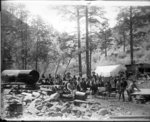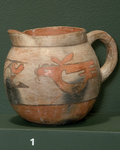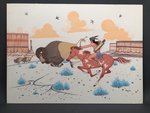Wind: 13.8 mph, W
Welcome to our new web site!
To give our readers a chance to experience all that our new website has to offer, we have made all content freely avaiable, through October 1, 2018.
During this time, print and digital subscribers will not need to log in to view our stories or e-editions.









With time and (virtual) space in abundance for many people because of public health orders, now may be the perfect time to connect with world-class museums and cultural sites outside Las Cruces.
The New Mexico Department of Cultural Affairs (NMDCA) brings the state’s “unique blend of cultures into your home through its museums, historic sites and cultural institutions,” NMDCA said in a news release.
Created in 1978 by the state Legislature, NMDCA is New Mexico’s “cultural steward, charged with preserving and showcasing the state’s cultural riches,” NMDCA said. “With its eight museums, seven historic sites, arts, archaeology, historic preservation and library programs, NMDCA is one of the largest and most diverse state cultural agencies in the nation. Together, NMDCA facilities, programs and services support a $5.6 billion cultural industry in New Mexico.”
“Newmexicoculture.org makes it easy for New Mexicans across the state to connect with an array of NMDCA’s programs offered through our museums, historic sites and other institutions, via online or on social media,” said NMDCA Sec. Debra Garcia y Griego. “For example, residents in the southern part of the state are able enjoy virtual programming that’s available in Albuquerque, Santa Fe and at our historic sites throughout the state, without leaving home. These virtual offerings further the department’s mission to celebrate the rich cultural diversity of our state. “
There is also a link to a Cultural Atlas of New Mexico mobile app.
In late August, NMDCA highlighted the coming of the railroad to New Mexico in 1879, with historic and contemporary images from the Palace of the Governors Photo Archives and the Library of Congress; Family Fixins recipes for New Mexican cuisine shared through Las Cruces’ own New Mexico Farm and Ranch Heritage Museum; and award-winning Oklahoma-based artist Holly Wilson’s “We Need a Hero” work at the New Mexico Museum of Art.
Click on “Visit Virtually” at www.newmexicoculture.org to link to not only the Farm and Ranch Museum in Las Cruces and the New Mexico Museum of Space History in Alamogordo, but also the New Mexico Museum of Art, History Museum, Museum of International Folk Art and Museum of Indian Arts and Culture in Santa Fe, the Museum of Natural History and Science and the National Hispanic Cultural Center in Albuquerque, along with links to other sites, exhibitions and collections, photo archives, virtual classrooms, educational materials, resources and services.
Here are a few examples:
the Palace of the Governors Photo Archives, which contains an estimated 1 million items, including historic glass-plate negatives and lantern slides. Its collections date back to about 1850 and cover “the history and people of New Mexico and the expansion of the West, anthropology, archaeology and ethnology of Hispanic and Native American cultures and smaller collections documenting Europe, Latin America, Asia, Oceania and the Middle East.” Photographers include Adolph Bandelier and Charles Lindbergh. The site’s Photo Legacy Project “is actively seeking materials from contemporary photographers documenting the past 50 years of visual history in New Mexico.”
Other items that may interest you
